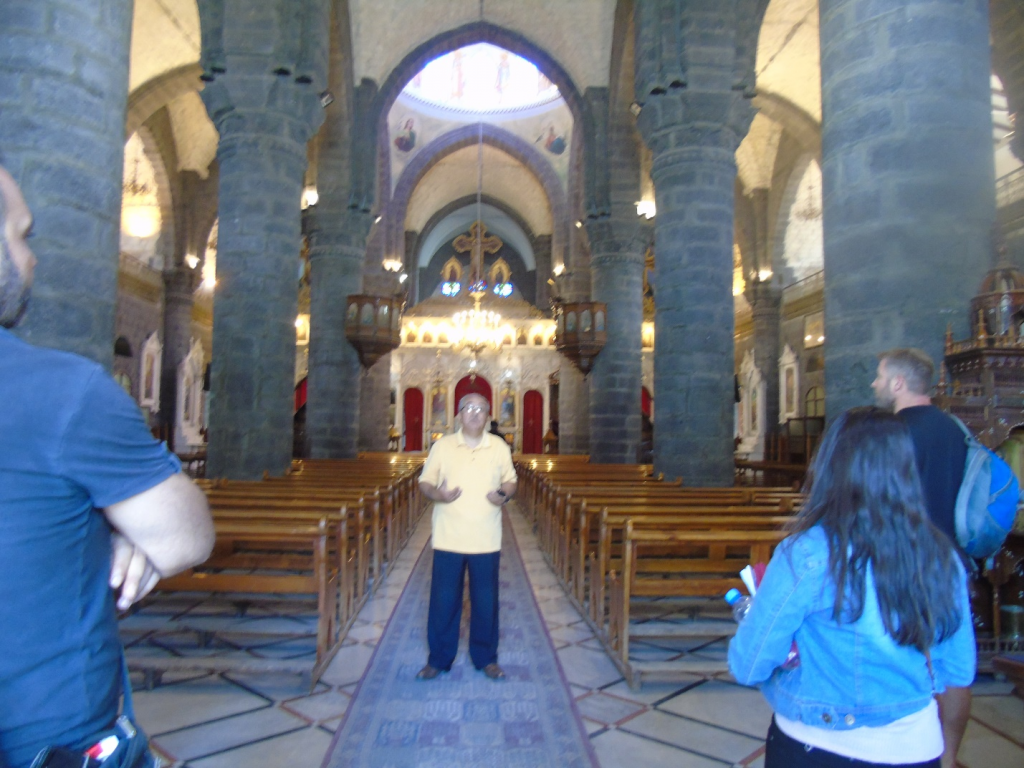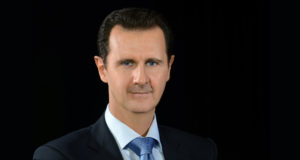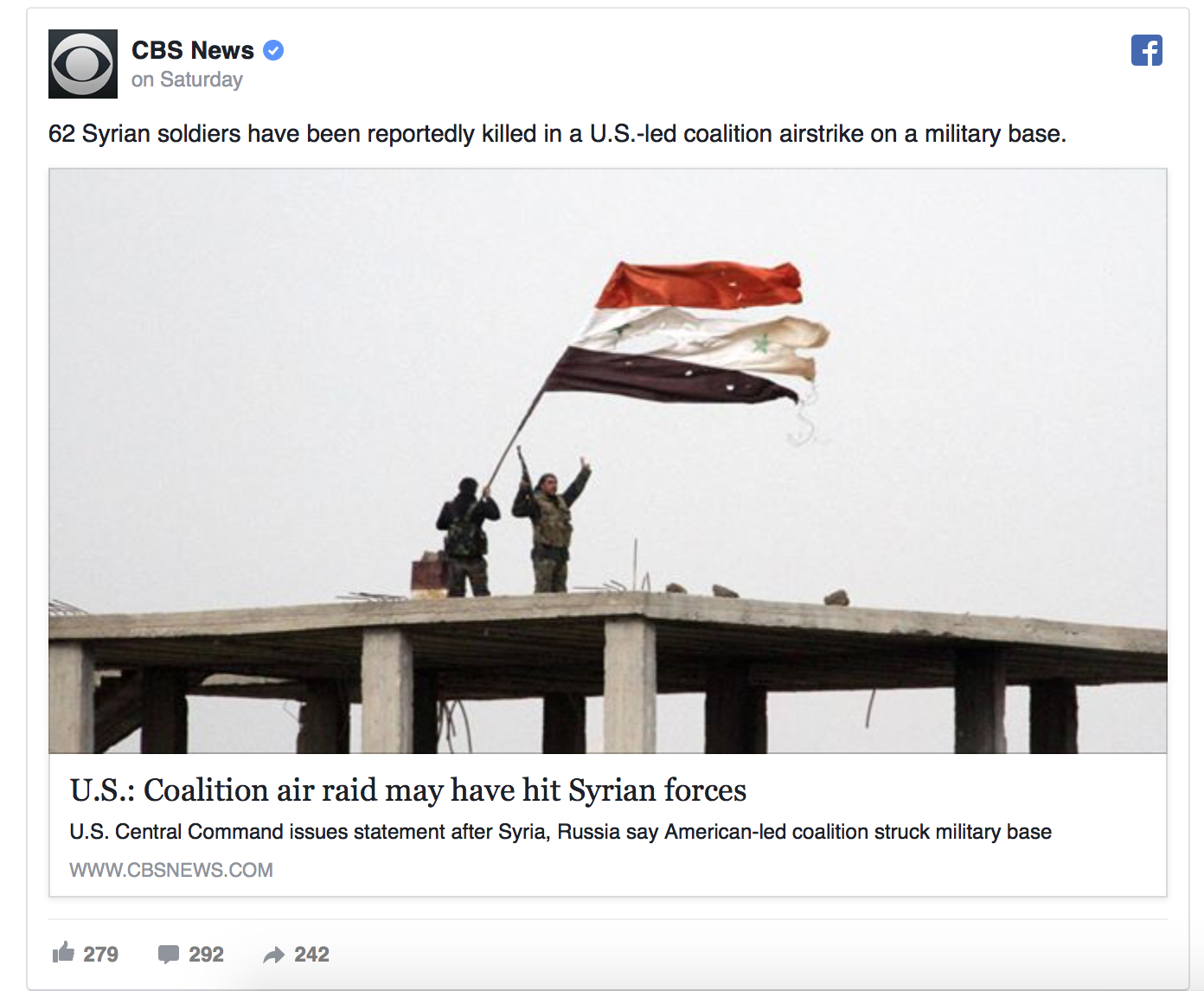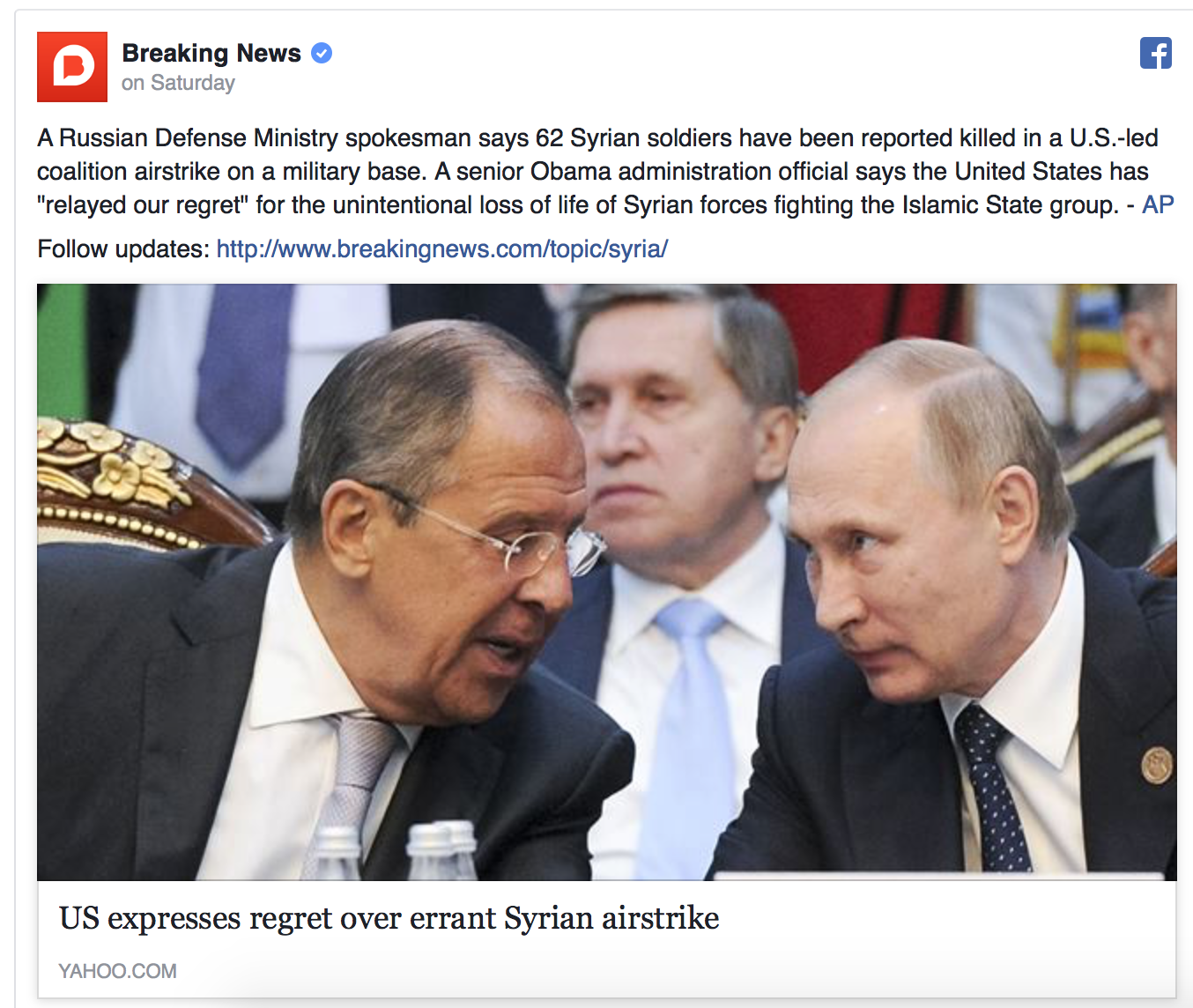The Syrian people are suffering under the ‘moderate rebels’ and ‘opposition forces’ backed by the US, NATO member states and their allies in the Gulf states and Israel. Yet their suffering is largely ignored in the mainstream media unless it furthers the agenda dictated by the State Department.
Mint Press Editor’s Note: This article is the first in a two-part series of one Western journalist’s journey to Aleppo, a city ravaged by an insurgency supported by the United States, NATO member states, and their allies in the Gulf states and Israel.
In Part I, Vanessa Beeley lays out the mainstream narrative on Syria, revealing a neoconservative agenda promoted by NATO-funded NGOs. These NGOs paint the destruction of the historic city as being caused by the Syrian government under Bashar Assad, not the violent armed insurgents which receive arms, funding and training from Western governments and their allies.

Passing through Khanaser, al-Safira, and the industrial city of Sheikh Najjar on the road to Aleppo. (Photo by Vanessa Beeley)
ALEPPO, Syria — Aleppo has become synonymous with destruction and “Syrian state-generated” violence among those whose perception of the situation in the war-torn nation is contained within the prism of mainstream media narratives.
The NATO-aligned media maintains a tight grip on information coming out of this beleaguered city, ensuring that whatever comes out is tailored to meet State Department requirements and advocacy for regime change. The propaganda mill churns out familiar tales of chemical weapons, siege, starvation and bombs targeting civilians–all of which are attributed to the Syrian government and military, with little variation on this theme.
The purpose of this photo essay and my journey to Aleppo on Aug. 14 was to discover for myself as a Western journalist the truth behind the major storylines in the U.S. and NATO narrative on Syria.
East and west Aleppo
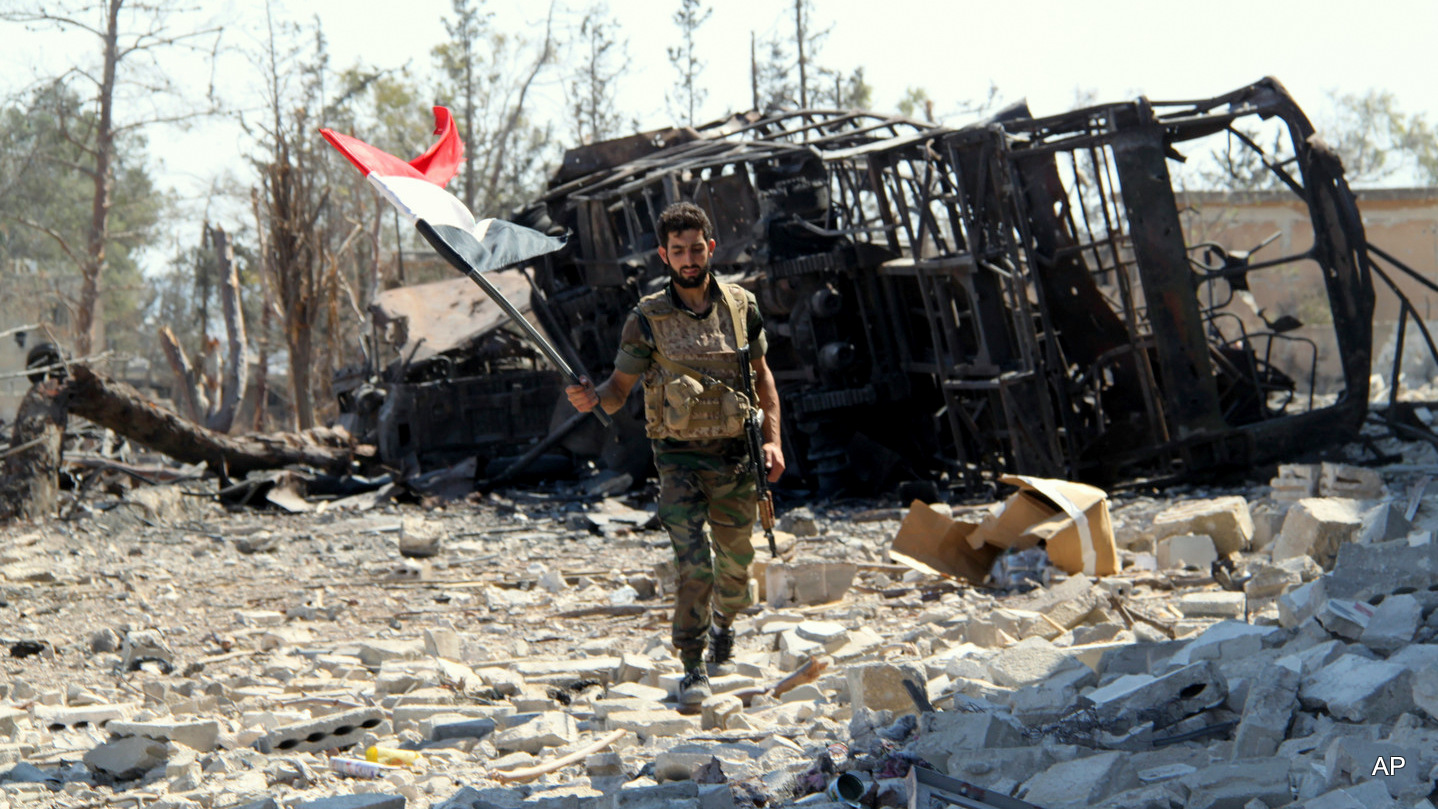
A Syrian soldier carries Syria’s national flag after successfully routing rebels from the Aleppo Military Academy in Aleppo, Syria. Sept. 05, 2016.
Most Western media fail to highlight the “tale of two cities” playing out betweeneastern and western Aleppo. The east is occupied by a number of groups backed by the United States, NATO and their allies in the Gulf, like Saudi Arabia, and Israel. Civilians in the government-held area of western Aleppo describe these groups broadly as “terrorists,” often without noting any specific group.
Over 1.5 million civilians live in the government-held areas of western Aleppo, including 600,000 civilians who fled eastern Aleppo in 2012. Of the 200,000 to 220,000 people living in the terrorist-occupied areas in the eastern parts of the city, an estimated 50,000 or more are members of the so-called “rebel” factions and their families, according to the Aleppo Medical Association.
In most Western media reports, little mention is made of this division of Aleppo which was created by the incursion of factions of armed insurgents (or, as the mainstream media and U.S. government call them, “moderate rebels”) which drove hordes of civilians out of the eastern parts of the city into the safety of the Syrian government-held western area.
Moderate rebels
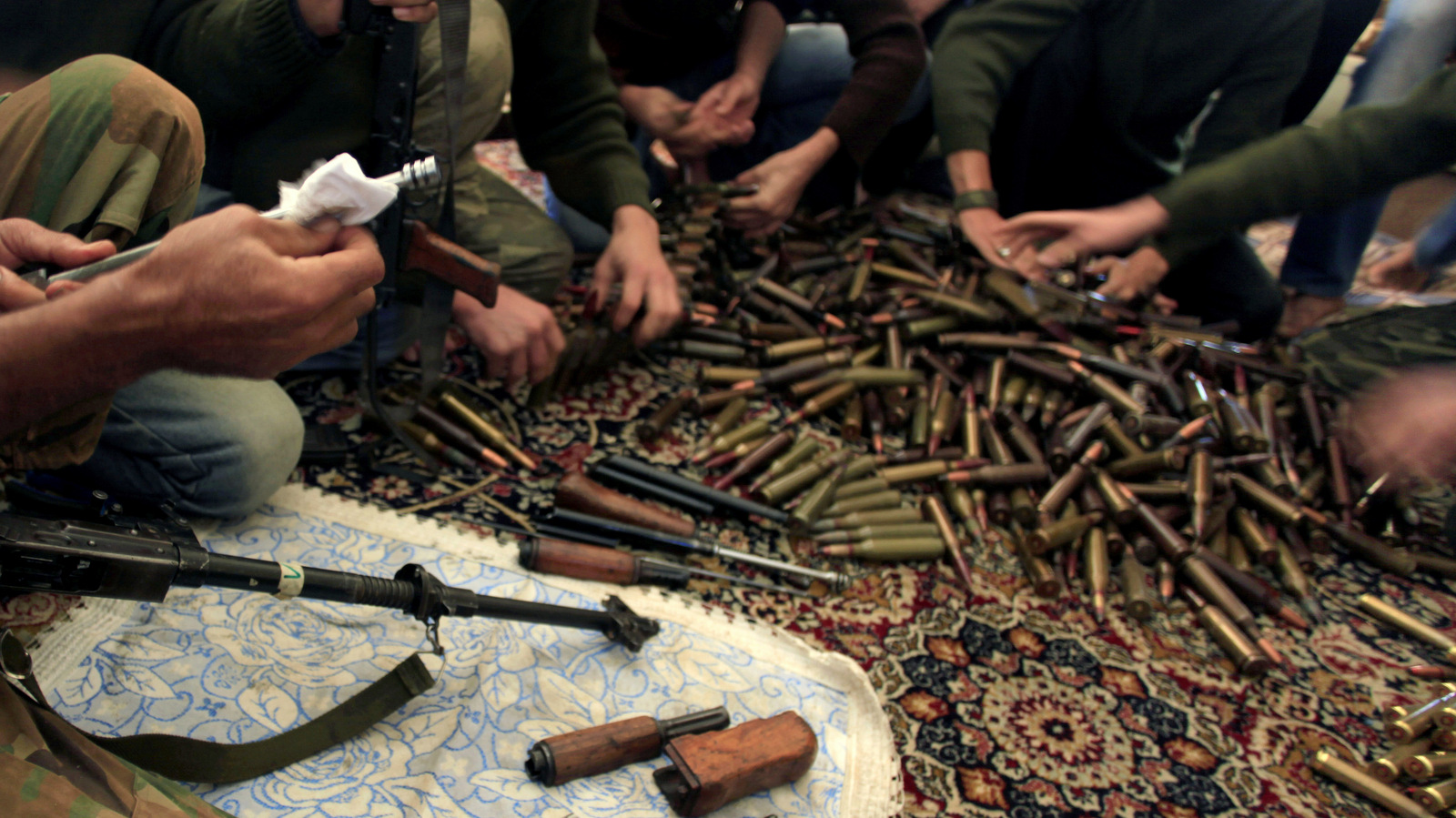
Free Syrian Army fighters clean their weapons and check ammunition at their base on the outskirts of Aleppo, Syria. (Khalil Hamra/AP)
Western media delights in perpetuating the narrative of the “brave opposition forces” being “pounded” by Syrian and Russian air raids. What they fail to mention is that the identified 22 brigades that operate in and around Aleppo are made up of U.S. State Department-funded terrorist fighters
Harakat al-Nour al-Zenki is among these brigades. Video recently surfaced of its members abusing and beheading a child, Abdullah Issa, from a Palestinian refugee camp in northern Aleppo.
There are also various offshoots of the Free Syrian Army, the U.S.-armed and -funded “moderate” opposition group that was trained by the CIA, which now relies upon the Nusra Front (Jabhat al-Nusra), al-Qaida’s arm in Syria, to bolster its arms and logistics capabilities.
The Nusra Front makes up 80 percent of the terrorists on the ground in eastern Aleppo. (The group recently announced a rebranding campaign in which it changed its name to the Front for the Conquest of Sham, or Jabhat Fatah al-Sham, and has made outward attempts to distance itself from al-Qaida. It has, however, made no changes to its leadership or extremist, elitist ideology; thus, this article will continue to refer to the group as the Nusra Front.)
Chemical weapons
The use of chemical weapons against civilians in western Aleppo by the terrorist groups, particularly the Nusra Front, is anathema to Western media. Instead, the media picks up spurious reports issued by “activist” groups and “citizen journalists” which claim to be working inside Aleppo. As in the case of a Sept. 7 report from Al-Jazeera on the Syrian Arab Army launching chemical attacks on civilians, this information is disseminated with alarming alacrity by journalists based in Washington, London or elsewhere, who have limited ability to verify this information or assess what’s really happening on the ground prior to publishing. The fact that the Nusra Front took over the only chemical factory in Aleppo in 2012 is swept under the carpet of inconvenient truths. And while the mainstream media doesn’t report it, former U.N. weapons inspectors and MIT rocket scientists have also confirmed that the Nusra Front has powerful chemical weapons capabilities
The activist groups and citizen journalists
Media pundits outside Syria rely on “activist groups” and “citizen journalists,” who are invariably embedded in areas occupied by groups such as the Nusra Front, Ahrar al-Sham, assorted Free Syrian Army brigades, and even Daesh (an Arabic acronym for the terrorist group known in the West as ISIS or ISIL). Whether they are individual activists or groups like the White HelmetsAleppo Media Center, it is hard to define them as independent or objective when they are known to receive funding from the United States, NATO member states, and state-funded institutions like USAID–all of which have a vested interest in the “regime change” road map in Syria. The “evidence” these sources produce rarely deviates from the official U.S. narrative and reinforces the propaganda that drives the train of lies that justifies intervention.
A fairly rudimentary investigation into the roots of the Aleppo Media Center reveal that it is funded by the French Foreign Office, which celebrates NATO- and Saudi-armed mercenaries as revolutionaries. The Aleppo Media Center is a member of the Syrian Expatriates Organization, and it also receives “support” from the Syrian Media Incubator, a creation of Canal France International, “the French cooperation agency and media operator of the French Ministry of Foreign Affairs.” The French foreign ministry announced in January 2014:
In April 2014, CFI will open a media centre, the Syrian Media Incubator, in the Turkish city of Gaziantep, 60km from the Syrian border, to the north of Aleppo. This collective workspace aims to provide modern telecommunication tools and support Syrian journalists who are determined to continue relaying news from their country, whatever the cost.
France can hardly be considered an impartial player in the neocolonialist game. In July 2015, the country’s foreign minister, Laurent Fabius, was taken to court by a group of Syrian plaintiffs who accused him of stoking the Syrian conflict in 2012.
The case cited several incidents in which Fabius was perceived to have praised the Nusra Front, including one in which he told Le Monde that the group was “doing a good job.” The grieving families consider his refusal to designate the the Nusra Front a terrorist organization in 2012 and his move to condone the group’s actions on the ground as major contributing factors in maintaining the brutal war on Syria and its people.
It is the duty of journalists to question the impartiality of reports from these organizations claiming to be independent. Western journalists are quick enough to dismiss reports that run against the grain of their narrative as being “pro-Assad.”
After the Aleppo Media Center posted the video of Omran Daqneesh on Aug. 17, the image of the Syrian boy covered in dust and blood was broadcast across global media networks without a single question regarding some glaring anomalies surrounding this incident. The GuardianAl-JazeeraThe Associated Press and its many, many subscribers, the Los Angeles TimesThe Telegraph are just some of the mainstream media outlets which reproduced this video and images from it without hesitation.
A Google search for “Fox News and Aleppo Media Center” returns an astounding number of results. So, Fox News relies upon a French Foreign Office-funded organization which produces propaganda from pro-NATO “activists” planted in Aleppo. Hardly “fair and balanced” reporting.
Humanitarian disaster and siege
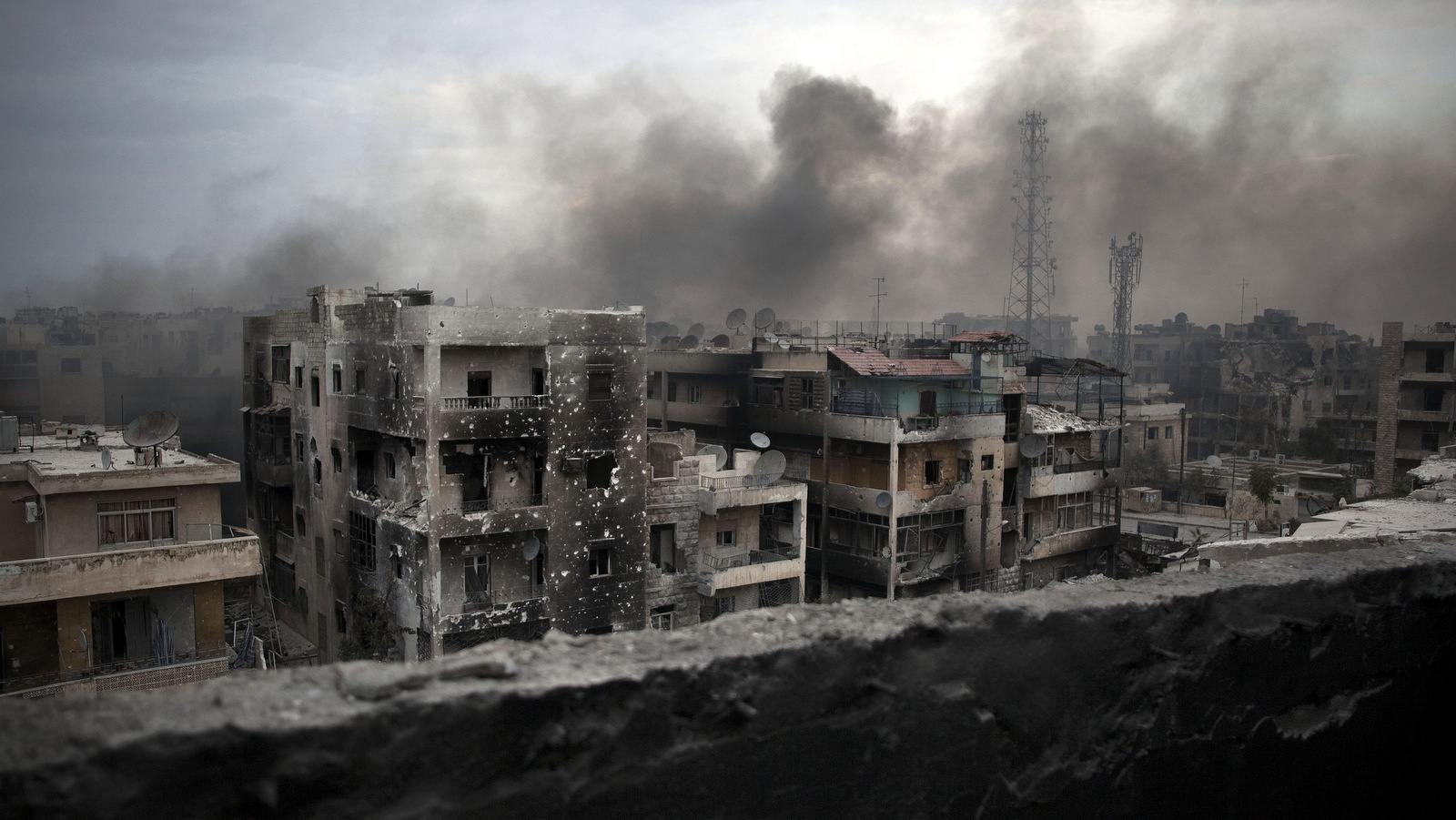
Smoke rises over a battle-scarred Saif Al Dawla district in Aleppo, Syria, on October 2, 2012. (AP Photo)
In informing the Western world that the Syrian government under President Bashar Assad is responsible for the siege of Aleppo, the Western media is selling the public a humanitarian war. “Syria’s rebels unite to break Assad’s siege of Aleppo,” according to a headline in the Guardian on Aug. 6.
This particular article actually celebrates the use of suicide bombers in the “rebel” capture of the SAA military academy in southern Aleppo. It describes the area as “the heart of Aleppo,” but that’s a very misleading term which suggests “rebels” have broken into the depths of the government-held western Aleppo. It’s an untruth that becomes a truth in the minds of a public which relies upon a “respected” media outlet to provide them with insights into the Syrian conflict.
These articles often do not mention the humanitarian corridors established by the Syrian state and Russia, or the amnesty deals being offered to the “armed opposition” fighting in Aleppo. When these subjects are mentioned, though, it is in passing or with a negative slant that undermines the very real efforts towardreconciliation being made by the Syrian state. The ministry of national reconciliation is headed up by Dr. Ali Haider, a member of the genuine, nonviolent Syrian opposition, the Syrian Social Nationalist Party.
On July 27, the Syrian Arab News Agency reported
The General Command of the Army and Armed Forces has been sending text messages calling on the militants in the eastern part of Aleppo city to lay down arms and seek a settlement of their legal status, and urging citizens to join national reconciliations and expel foreign militants from their localities.
Nor does the media mention that the United States and European Union are imposing crippling economic sanctions on Syria, while also actively pouring in thousands of weapons and millions of dollars in funding to the 360,000 foreign mercenaries committing human rights abuses throughout Syria.
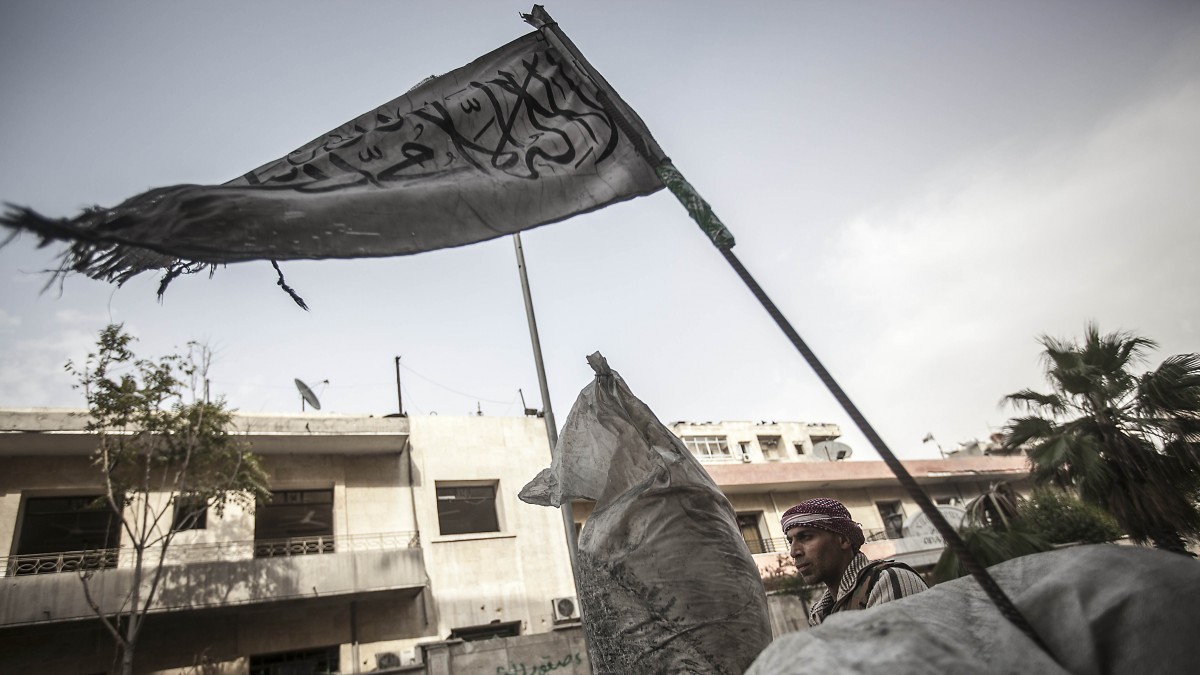
A rebel fighter stands guard at a check point flying a banner near the front line in Aleppo, when Syria rebels groups began fighting each other for control of a key checkpoint in the northern city of Aleppo. (Photo: Narciso Contreras/AP)
Aleppo is, indeed, under siege, but that siege is being imposed by the “moderate opposition” groups on civilians in western Aleppo and those living under a terrorist occupation in eastern Aleppo. Humanitarian convoys heading into western Aleppo are forced to pass through high-risk areas occupied by the Nusra Front and the myriad other terrorist groups operating there.
In August 2015, I shared a report from a resident of Aleppo on my blog. It reads, in part:
I feel nothing but rage when I see these thugs and criminals on the other side of the city pouring thousands of litres of clean, fresh water into the disease infested river under the noses of the thirsty Syrians they are claiming to liberate. They are the terrorists, they are the monsters in this story and they are committing daily mass crimes against the citizens of Aleppo but this is never mentioned by the western media. Are we not Syrian? Does our plight mean nothing, does our story not count? This is Aleppo, the real Aleppo, not the western media fantasy, this is our sleeping, waking, perpetual nightmare of life under terrorist occupation.
Dr. Bashar Al-Jaafari, Syria’s permanent representative to the United Nations, told the U.N. Security Council in January: “The true siege is on 23 million Syrians and it is being inflicted upon them by the U.S., U.K. and EU government sanctions.”
Along with the U.S.-led coalition’s bombing raids that have targeted power plants and other essential infrastructure, these sanctions have decimated the civilian health and education sectors in Syria. If Syrians are starving or unable to receive treatment for severe injuries or chronic illnesses, it is because NATO is imposing a war upon them, introducing mercenary fighters who are paid to murder and drive Syrians from their homes, and blocking supplies and equipment from reaching hospitals and schools.
Of course, all of these topics are worthy of stand-alone articles. My trip to Aleppo was curtailed slightly due to the escalation in fighting between the SAA and various “moderate rebel” and mercenary groups headed up by the Nusra Front. I was, however, able to glean some very valuable information and statements that go a long way toward discrediting the NATO-aligned media narrative.
One Syrian man in Aleppo told me:
Almost everything they blame the government or the army for in the last five years was actually carried out by the terrorists, by NATO. They are targeting infrastructure, hospitals, kids, women. They are raping women. They are using chemicals, chlorine, mustard gas.
I’ve withheld his name out of respect for his safety–a common issue in a city that has been under a constantly evolving media and terrorist siege since the NATO intervention gathered momentum in Syria almost six years ago.
The information siege has been imposed upon Aleppo by American and European mainstream media, as well as various offshoot media funded by the Gulf states or Turkey that rely heavily on al-Qaida as sources. It has ensured that little real news has been able to escape the propaganda tent erected over a city that resisted all attempts to be drawn into the armed insurrection from the very beginning of the dirty war on Syria.
And this dirty war is one that had been incubating long before it officially began in December 2011, as demonstrated by State Department cables released by WikiLeaks, which show that plans to destabilize Syria and overthrow the government had been forming as early as 2006.
What often goes unreported is the punishment meted out to Aleppo’s civilian population by the multiple brigades of terrorists armed, funded and even trained by the United States, NATO members and their allies in the Gulf states and Israel. The mainstream media instead scrambles to further vilify the SAA and Assad government by any means available to them, including the dissemination of later debunked and discredited reports
Traveling from Homs to Aleppo

A of The route from Damascus to Sheikh Maqsoud, a Kurdish-held neighborhood in Aleppo. (Screenshot provided by Vanessa Beeley)
Travelling with a fellow independent journalist, Eva Bartlett, a translator and a taxi driver, I entered Aleppo on Aug. 14 via Castello Road, which some mainstream media have taken to calling “Death Road.” To get there, we were given a security clearance which enabled us to travel via roads that, from the western city of Homs onward, snake through areas where various terrorist groups, including Daesh, are never far from the route or where the threat of kidnapping is to be taken into account. Entry into military areas once inside Aleppo could not be approved without SAA protection and accompaniment.
In Homs I witnessed what is a familiar sight throughout Syria: buildings scarred and battered by years of terrorist attacks. I was told that we were passing what was once known as 60th Street, but has since taken a new name, Street of Death (Shara al-Moot), as it came under terrorist attack from north, south, east and west. These attacks employed snipers, mortars and suicide bombers; it seems there were no restrictions on ways for terrorists to kill the Syrian people in Homs.
Traveling north on the road from Homs to Hama, we came to a major SAA checkpoint at a crossroads teeming with life. Waiting for the inevitable security check, I had the opportunity to lean out of the taxi window and observe. Photography, however, is forbidden at checkpoints.
These SAA checkpoints are common throughout Syria. Their main purpose is to check cars for explosives and weapons or extremist militants such as Daesh or the Nusra Front, who might be attempting to pass undetected from one governorate to another. Cars and other vehicles are used as suicide bombs in many areas, particularly in Homs’ al-Zahra’a neighborhood, which has been targeted many times, resulting in multiple deaths and injuries.
A steady stream of buses and livestock wagons came into this checkpoint from the directions of Hama and Homs. Many of the buses were carrying families clutching their belongings, possibly refugees, and vans were topped with assorted boxes and bags.
We got a wave from passing SAA soldiers, who, despite the severity of the fighting in Aleppo and the surrounding countryside, never displayed anything except courtesy and respect–something I found to be true throughout my four-week journey around Syria. One soldier sat cross-legged on top of a tank that was on a transporter parked at the crossroads, and he smiled in the already sweltering morning heat as he waited for his comrades to join him.
The SAA equipment was noticeably battle-weary. Their weapons bore the marks of war and had not been replaced for some time. And while public images of Daesh fighters usually feature weapons and other supplies that look like they’ve just been taken out of the box, many SAA soldiers were wearing boots and uniforms with heavy wear and tear.

A screenshot from a video released by ISIS, shows the execution of Jordanian pilot Moaz-al-Kasasbeh in 2015. Vvery well-equipped ISIS militants are visible behind al-Kasasbeh.
The SAA is affected by the sanctions enforced by the United States and European Union, but the various terrorist brigades backed by the United States, NATO, their allies in the Gulf states and Israel are not. The latter’s supply chain is unbroken and unaffected, thanks to the Turkish gun and equipment running services via its porous borders with Syria.
U.S. and EU sanctions effectively prevent any supplies from entering Syria via legal channels, and we frequently saw the detrimental effects this has had on essential civilian infrastructure as well as military personnel and equipment.
However, illegal supply channels have not been affected, ensuring perpetual conflict by arming and equipping the many brigades of “moderate rebels” and “opposition forces.” Whether it’s Saudi Arabia, Jordan, Turkey and the United Arab Emirates sustaining Daesh with arms flowing in through the Balkans, or the United States supplying its rotating cast of “moderate rebels” with weapons via Turkey, there is no turning off the logistics and armament tap to the “armed opposition.”
In April, for example, an IHS Jane’s report featured a packing list for a December 2015 U.S. arms shipment to “Syrian rebels” via the Syria-Turkey border. The report stated:
The cargo listed in the document included AK-47 rifles, PKM general-purpose machine guns, DShK heavy machine guns, RPG-7 rocket launchers, and 9K111M Faktoria anti-tank guided weapon (ATGW) systems. The Faktoria is an improved version of the 9K111 Fagot ATGW, the primary difference being that its missile has a tandem warhead for defeating explosive reactive armour (ERA) fitted to some tanks.
It should be noted that this particular arms shipment to the “moderate rebels” was made during a ceasefire agreement that had been implemented across many Syrian governorates.
2014 video report from Deutsche Welle further explains the gun-running process from Turkey to Syria, a process that continues to this day. DW explains in the introduction to the video:
Every day, trucks laden with food, clothing, and other supplies cross the border from Turkey to Syria. It is unclear who is picking up the goods. The hauliers believe most of the cargo is going to the ‘Islamic State’ militia. Oil, weapons, and soldiers are also being smuggled over the border, and Kurdish volunteers are now patrolling the area in a bid to stem the supplies.
It is hard to disassemble the various factions of armed militants. Many times I asked for clarification on which armed group had carried out a specific attack and was told that most Syrians made no such differentiation. According to civilians, these groups are made up of criminals, mercenaries and terrorists, and their titles are irrelevant.
The United States has played this fact to its own advantage, using the “intermingling” of “rebel” groups as an excuse to impede Russian and Syrian efforts to target officially designated terrorist groups, such as Daesh and the Nusra Front, in case U.S. operatives are among them. As such, U.S. operatives in groups they are supporting effectively become “human shields” for the terrorist groups that the U.S. is ostensibly waging war against, like Daesh.
In an April 28 press briefing, John Kirby, a spokesperson for the State Department, noted:
[W]e know it’s a very fluid, dynamic environment, that there are – that there is intermingling between the groups. Some of that is by design because they want to be near one another and some of it is by happenstance. And it is why strikes in and around Aleppo become a more problematic issue, because it’s very difficult to separate some of these groups from one another geographically in order to – and then to be precise enough that only the group that you’re trying to go after is going to be hit.
Along our route into Aleppo, assorted vehicles were being used to transport SAA soldiers–ramshackle livestock trucks with open backs, old buses, brightly colored supply wagons–but the level of respect and admiration with which the soldiers were viewed by Syrian civilians was palpable.

Syrian Arab Army soldiers travelling to war via the road to Aleppo. (Photo by Vanessa Beeley)
After the checkpoint between Homs and Hama, there is a stretch of road which is notorious for vehicles of bandits forcing cars and buses off the road before kidnapping passengers. Despite the risks it held, the stretch of road was picturesque, lined with maize, olive groves, and sunflowers. The first signs of livestock–chicken, sheep, and cows–dotted the greening landscape.
Passing through the city of al-Salamiyah, we were told that Daesh was encamped about 10 kilometers east of the road. Looking out across the seemingly interminable desert stretching into the horizon, it was hard to imagine that we were visible to these terrorist entities.
As the road continued toward Aleppo, we reached an area where Daesh had drawn closer and we were told they were only 2 kilometers away. Trucks were passing us on their way from Homs to Aleppo carrying supplies for SAA soldiers, I presumed as reinforcements for the campaign against the terrorist enclaves in al-Ramouseh, a suburb in southeast Aleppo.
Eerie reminders of the war being imposed upon Syria rose up out of the desert, like the burned-out trucks and cars overturned and disintegrating slowly in the blazing heat. An apocalyptic vision of a country being torn apart by another NATO intervention, a dirty war being inflicted upon a sovereign nation, with the objective of “regime change” regardless of the bloodshed and devastating costs incurred by the Syrian people.
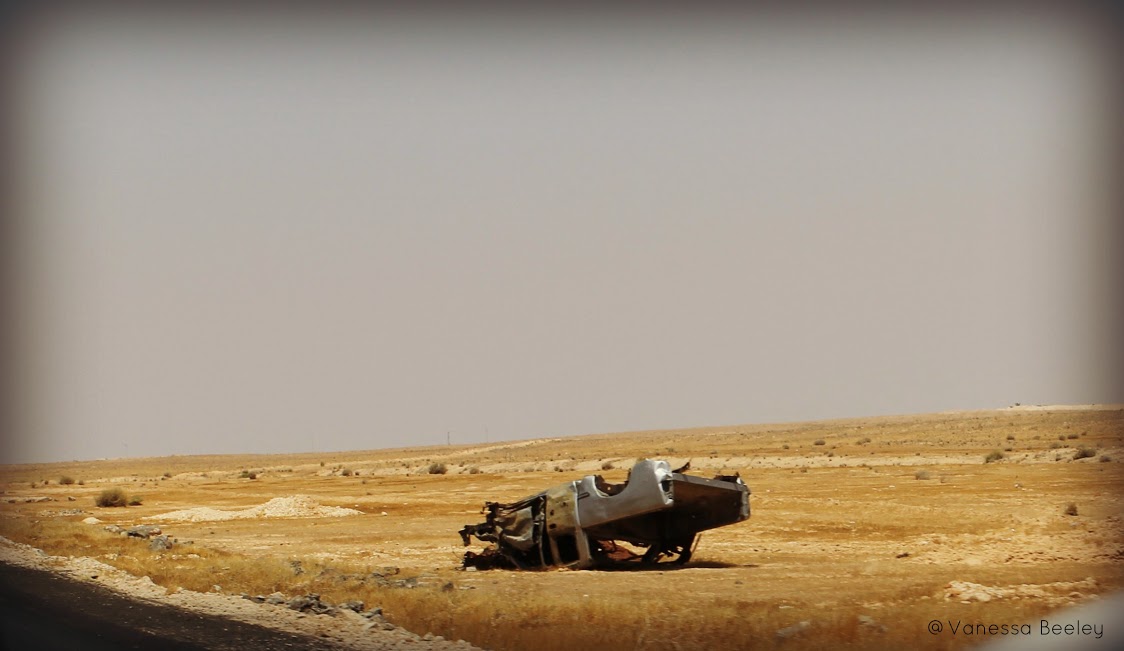
An overturned vehicle bakes in the scorching desert sun on the road to Aleppo. (Photo by Vanessa Beeley)
As we drew closer to the outskirts of Aleppo, it became apparent that the SAA had closed the usual western route for security reasons. We were diverted to the east of the city via Khanaser, a town in the al-Safira district, and finally the industrial city of Sheikh Najjar before the road doubled back in toward the northern entrance into western Aleppo via the Kurdish-held Sheikh Maqsoud neighborhood.
We skirted some of Aleppo’s most densely terrorist-occupied areas in eastern Aleppo. Again, these terrorists might be Daesh, the Nusra Front, Ahrar al-Sham, or Harakat al-Nour al-Zenki, among many others. This clearly shows the areas held by various factions of armed insurgents. Black represents areas held by Daesh; green: “moderate rebel forces;” yellow: Kurds; red: the SAA; and olive: contested areas. This map is constantly changing as the SAA advances, particularly in al-Ramouseh.
At this point, the “sniper banks” became more noticeable, sand and rubble piled high on either side of the road, sometimes topped by car remnants and scrap metal or barrels used as a screen to protect travellers from sniper sights and fire.
Prior to reaching Castello Road we arrived at a T-junction, and our confused taxi driver hesitated before turning right.
Another vehicle tore after us within seconds, with SAA soldiers on board who yelled at us to turn left. Turning right would take us directly into a Daesh-held area, they warned.
The point where we turned right instead of left toward Aleppo before being redirected to safety by the Syrian Arab Army. Photo by Vanessa Beeley.
Nearing the entrance to Aleppo, not far from the city’s northwestern industrial area of al-Layramoun, we passed a checkpoint where the soldiers urged us to maintain our distance from other vehicles. There was a high risk of terrorist mortar fire, they explained, and putting distance between vehicles meant reducing casualties if one vehicle was hit.

The point where we turned right instead of left toward Aleppo before being redirected to safety by the Syrian Arab Army. (Photo by Vanessa Beeley)
Following fierce clashes, SAA forces had recaptured al-Layramoun from the Nusra Front and the 16th Division of the Free Syrian Army in July. The area is strategically important, as it borders Castello Road, which had been a major artery for supplies and arms for the terrorists streaming in directly from Turkey. Once the SAA retook the area, however, it effectively cut terrorist entities off from the Turkish supply chain.
In the fields along the route were dozens of unexploded gas canisters, the “hell cannon”-fired bombs usually packed with explosives, glass, shrapnel, nails, and even chemicals. Those which had not hit their targets littered the countryside. These are the improvised missiles fired on a daily basis into the Syrian government-held areas of western Aleppo by the various armed insurgents occupying the eastern parts of Aleppo.
Current figures from the Aleppo Medical Association put the population of government-held western Aleppo at 1.5 million civilians. Another 200,000 to 220,000 people–a quarter of whom are terrorists and their families–are living in the eastern parts of the city controlled by various factions of armed insurgents backed by the United States, NATO and their allies, including Saudi Arabia and Israel.
However, according to On the Ground News, a media outlet known for harboring sympathies for the “rebel” forces, there are no civilians left in eastern Aleppo.
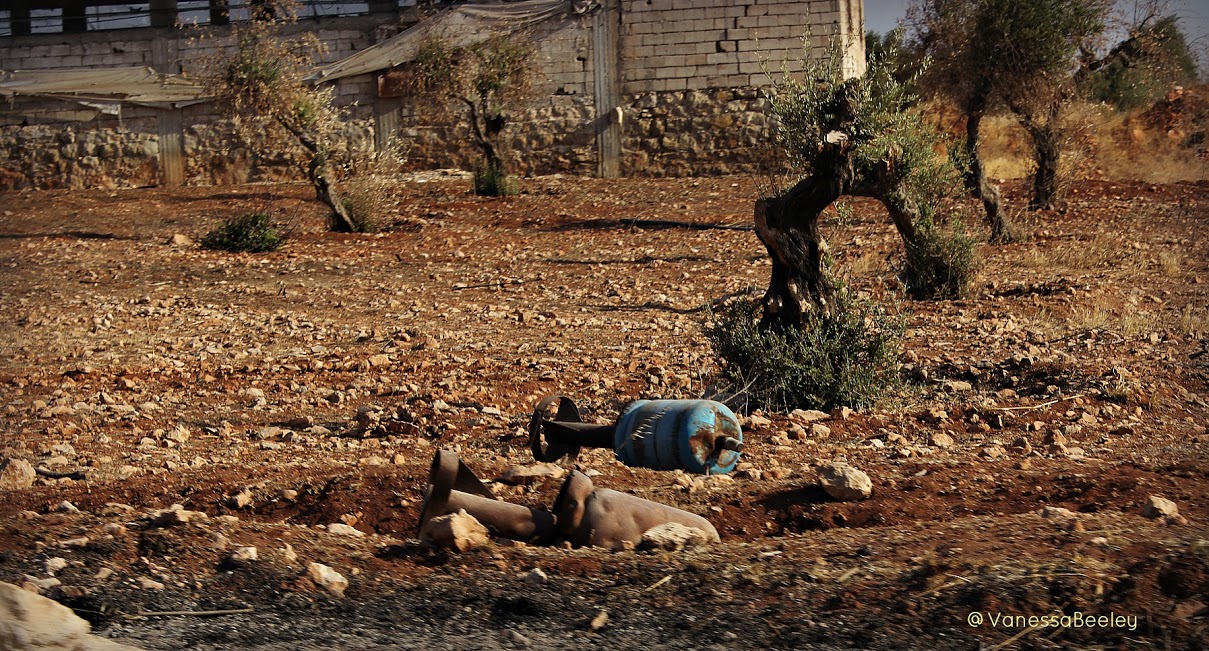
Scattered along the side of the road were dozens of unexploded gas canisters, improvised bombs usually packed with explosives, glass, shrapnel, nails, and even chemicals. (Photo by Vanessa Beeley)
Passing the former Aleppo Central Prison
We passed the former Aleppo Central Prison, where the Ahrar al-Sham coalition, Daesh, and their associates staged a prolonged siege, holding SAA soldiers trapped inside from April 2013 to May 2014. According to a revelatory Al-Akhbar article written after the liberation of the prison by SAA forces attacking from outside, there were two main reasons for the siege:
The militants wanted to achieve two secondary goals: recruiting some prisoners after ‘liberating’ them, and taking advantage of the prison’s strategic location. That is in addition to the main goal of freeing dozens of Islamist prisoners, the majority of whom (61 to be precise) belong to Jund al-Sham.
It’s another fact never mentioned by the media beating the drums of war who are working in lockstep with the State Department to maintain the “Assad must go,” “no-fly zone,” “boots on the ground” narrative: Across Syria, the so-called “moderate rebels” released prisoners–convicted rapists, murderers and other hardcore criminals–in order to swell the ranks of their terrorist armies.
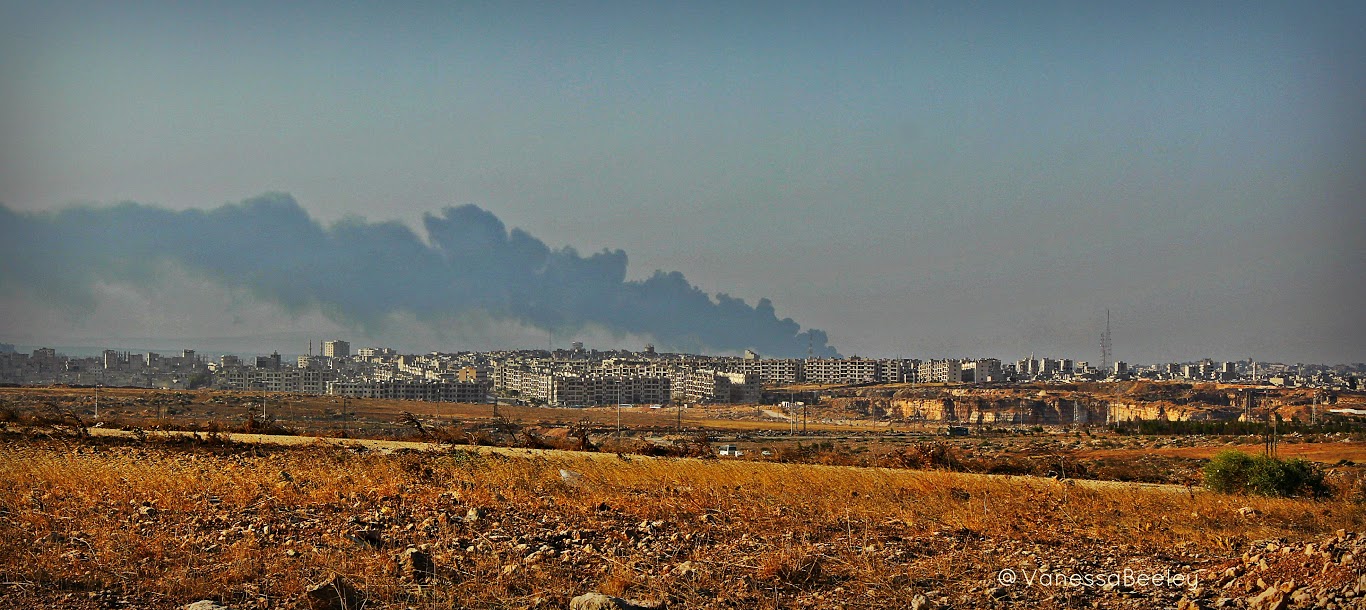
The first view of al-Ramouseh, a suburb in southeastern Aleppo. The smoke is from a burning tarwell after being bombed by terrorists three or four days prior. (Photo by Vanessa Beeley)
Entering Aleppo
We entered Aleppo via Sheikh Maqsoud, a Kurdish-held neighborhood that has been severely attacked by the terrorist gangs surrounding it, including the 16th Division of the Free Syrian Army and the Nusra Front. The decimation of the neighborhood was as shocking as it is in every other town, village, or city that has been pounded by NATO-backed terrorists’ hell cannon mortar fire and a variety of rockets, explosive bullets and missiles fired from launchers ranging from rudimentary, improvised devices to the more sophisticated U.S.-supplied equipment.
Yet the weapons–missiles, gas canisters, water heaters, and any other container at hand which is packed full of lethal explosives and limb-shredding materials–are rarely highlighted or even mentioned in the mainstream media. The unnamed Syrian whose account I published on my blog, also reported:
The terrorists are using mortars, explosive bullets, cooking-gas cylinders bombs and water-warming long cylinders bombs, filled up with explosives and shrapnel and nails, in what they call ‘Hell Canon’. (google these weapons or see their YouTube clips. The cooking-gas cylinder is made of steel, and it weighs around 25 kg. Imagine it thrown by a cannon to hit civilians? And imagine knowing that it’s full with explosives?
Dr. Mohammed Jassim, a volunteer medic, told RT recently:
February and April of 2016 was the worst period for Sheikh Maqsood we got thousands of attacks, so many different kinds of shelling, and according to my statistics we had almost 800 dead and injured civilians, and the neighbourhood was largely destroyed.
On April 20, U.S. Army Col. Steve Warren, spokesman for Operation Inherent Resolve, the U.S. campaign against Daesh in Iraq and Syria, updated reporters at the Pentagon via video feed from his station in Baghdad. He admitted that, at the time, “It’s primarily al-Nusra who holds Aleppo.”
Watch “Inherent Resolve Spokesman Updates Reporters” from Defense Video Imagery Distribution System:
The atmosphere was tense as we entered Sheikh Maqsoud. The Kurds are in control of this region but we were told not to take photos near the checkpoints manned by Kurdish forces.
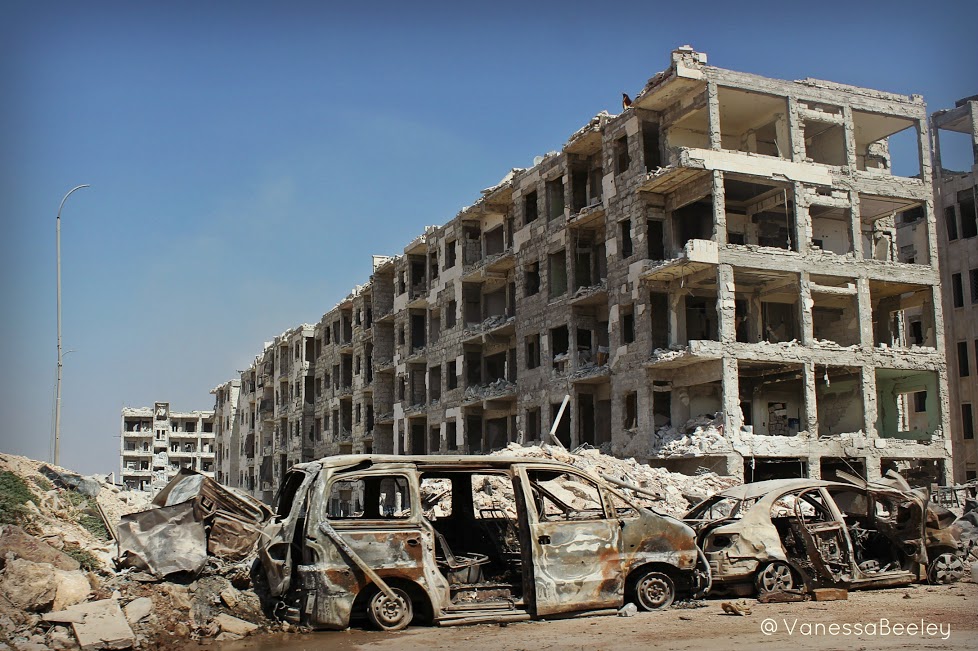
The extent of the destruction inflicted upon the Kurdish-held Sheikh Maqsoud by the U.S.-backed “moderate rebels” and the scars of the battle for its liberation are highlighted in the state of the neighborhood’s infrastructure. (Photo by Vanessa Beeley)
The weaponization of children
Amid the terrorist attacks and the daily massacres of Syrian civilians by Western-backed “moderate rebels,” the children maimed and mutilated by these attacks are almost invisible to the mainstream media. The mainstream media does, however, showcase stories like that of Omran Daqneesh–stories which serve and propel the NATO narrative despite the dubious sources from which they emanate.
If the Western media is truly concerned about the children affected by war, where was the outrage in July, when Harakat al-Nour al-Zenki, a U.S.-backed terrorist group, beheaded a 12-year-old Palestinian boy named Abdullah Issa?
Why did the State Department find it so difficult to unequivocally condemn this hideous crime against one innocent child, and yet another was immediately described by that same State Department as “the real face of what is going on in Syria
The Guardian reported quoted State Department spokesman John Kirby as saying:
That little boy has never had a day in his life where there hasn’t been war, death, destruction, poverty in his own country.
According to the Guardian, Kirby further “suggested Omran’s case should spur efforts to secure a broad cessation of hostilities.” No need for an investigation prior to catapulting this image into the realms of propaganda designed to tug at the heartstrings.
Abdullah’s brutal decapitation did not provoke calls for the cessation of hostilities from Harakat al-Nour al-Zenki or a commitment from the State Department to stop arming and supporting his “moderate” murderers.
Video of Abdullah’s brutal beheading gave the U.S. “pause about any assistanceto his murderers; video of Omran, bloody and covered in dust, elicited a range of calls to arms, including a no-fly zone, military intervention, increased restrictions on humanitarian aid, and reinforced sanctions.
It’s important to understand where the story of Omran Daqneesh started. It was broken by the aforementioned Aleppo Media Center and “photojournalist”Mahmoud Raslan (sometimes spelled Rslan), who has been identified as the militant in the following photo, taken with the Harakat al-Nour al-Zenki members who executed Abdullah Issa.
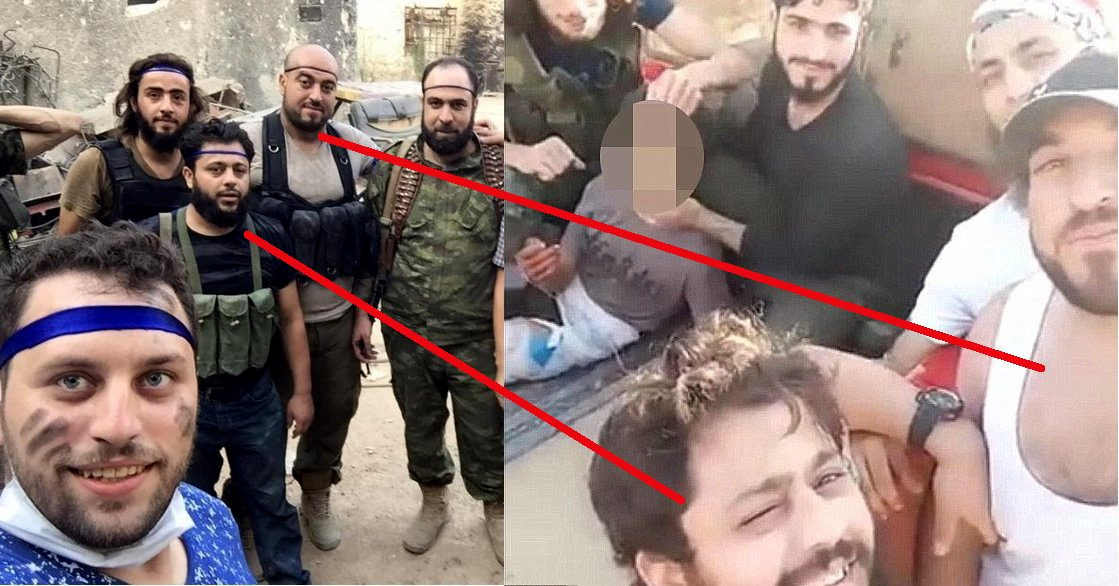
Mahmoud Raslan (in blue; bottom left) taking a selfie with two of the men who tortured Abdullah Issa. Photo: Mahmoud Raslan (in blue; bottom left) taking a selfie with two of the men who tortured Abdullah Issa. (Photo: The Canary)
The story of Omran Daqneesh was produced by two highly questionable sources–and, in the case of Raslan, possibly criminal–yet it was deemed credible and worthy of mass promotion by Western media.
an Aug. 31 opinion piece for teleSUR, Tim Anderson, an Australian academic and writer, highlighted the difference in the media’s treatment of Omran and Abdullah:
The images of little Omran, put out by jihadist support groups, gained widespread attention from the western media, which has backed the sectarian gangs through more than five years of brutal terrorist war. On the other hand, video of the murder of little Abdallah was largely ignored, or scorned with claims that the boy was really 18 years old, or a spy for the pro-Syria Palestinian militia Liwa al-Quds.
What is perhaps most disturbing about the comparison between these two stories, is the cynical abuse and weaponization of children that is being supported by the NATO-aligned media machine. This is a calculated use of one child as a psychological instrument to promote and legitimize war, while the torture and cold-blooded execution of another is marginalized to protect the U.S. agents who perpetuate that war.
City of Aleppo
As we drove further into the suburbs of Aleppo the damage became less intense. A veneer of normality obscured the terror that this city faces each day as it comes under attack from the armed insurgent groups camped at the boundaries of their refuge from Salafist extremism and ethnic cleansing–a threat hugely feared by the religious minorities in government-held western Aleppo.
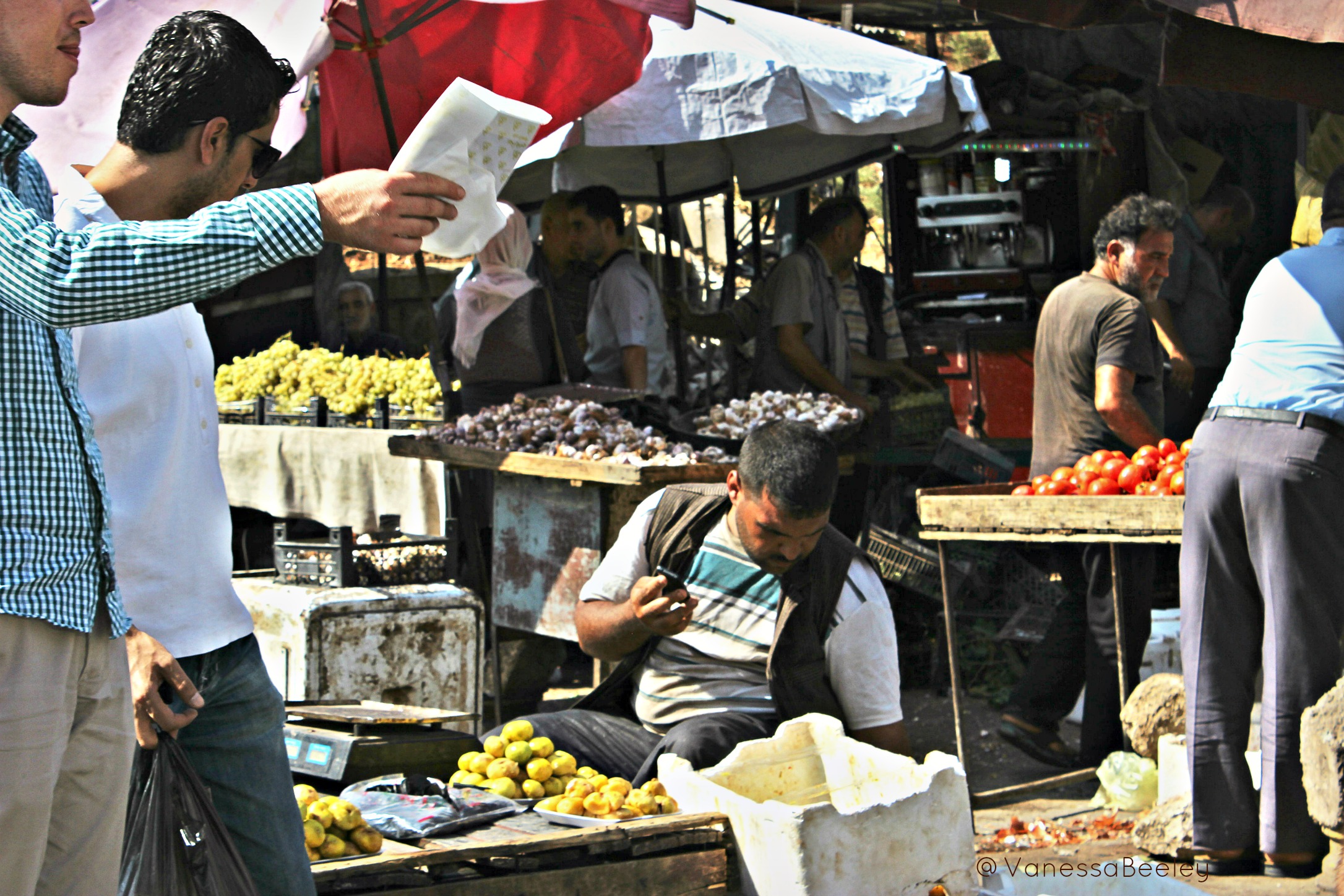
A market buzzes with activity in western Aleppo. (Photo by Vanessa Beeley)
Dr. Nabil Antaki is one of the 4,160 doctors working in western Aleppo who are largely ignored in the NATO-aligned media. He said minorities, like those in Shiite Muslim and Christian communities, were terrified that if the SAA were to be driven back by the assorted aforementioned terrorist gangs, it would result in a situation similar to that of Mosul, Iraq, where these minorities would be massacred.
These minorities, according to Dr. Antaki, were making contingency plans to leave the city in convoys to attempt to protect themselves from the terrorist hordes if they did break through SAA defenses.

Driving through western Aleppo at dusk. (Photo by Vanessa Beeley)
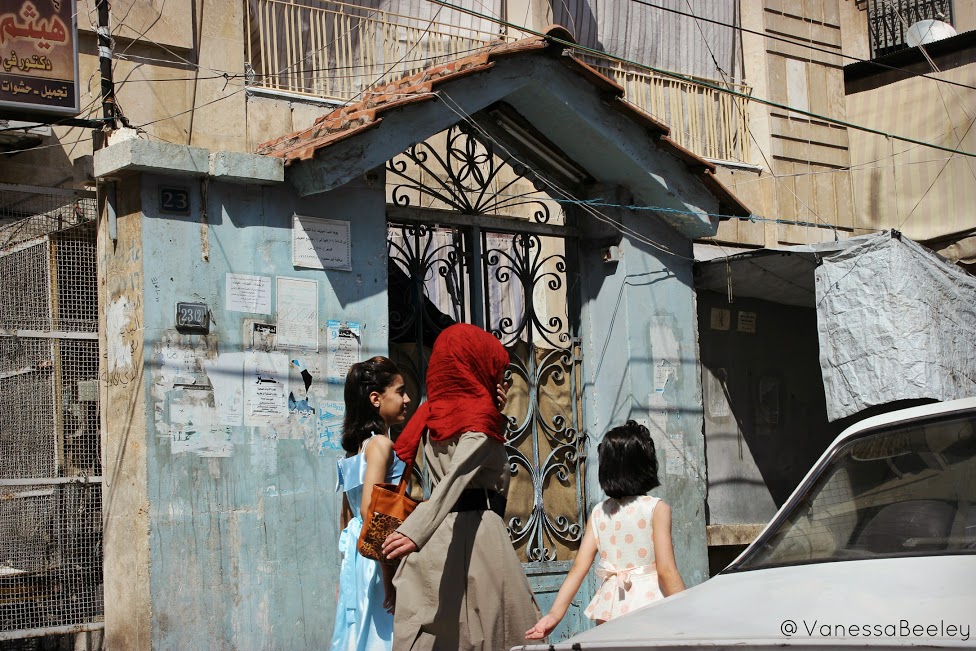
Leaving Sheikh Maqsoud and entering the suburbs of western Aleppo. (Photo by Vanessa Beeley)
Visiting Bani Zaid
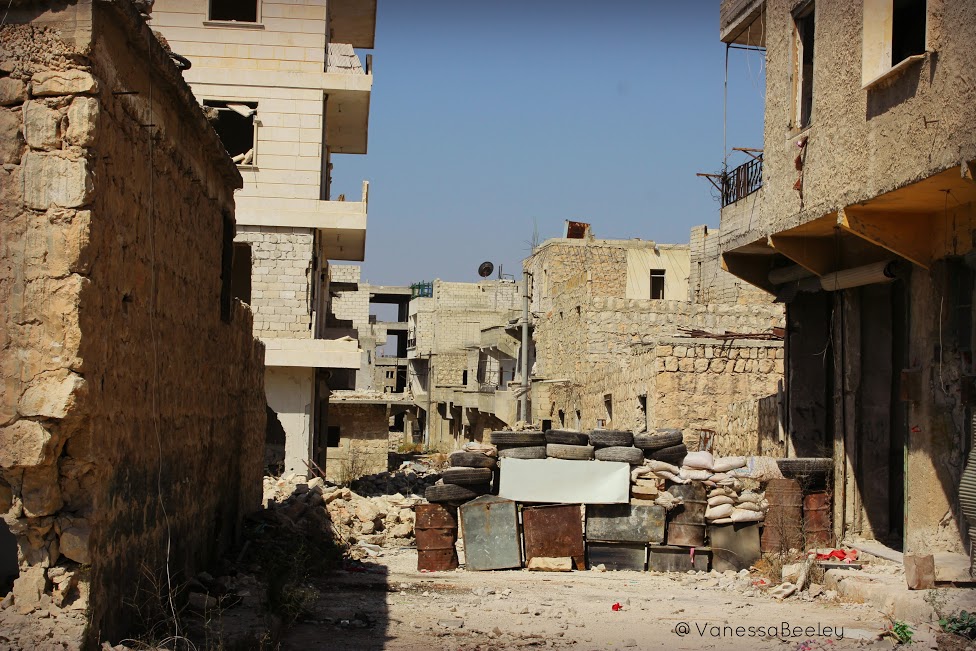
The remnants of a “moderate rebel” sniper barrier in Bani Zaid. (Photo by Vanessa Beeley)
Bani Zaid, a town in the northern part of the province of Aleppo, had been liberated by the SAA in July, just a few weeks prior to our arrival in Aleppo. Before liberation, the neighborhood had been used as a launchpad for the deadly “hell cannon” missiles into residential areas in western Aleppo, so the development was hugely celebrated by the Syrian people.
Information was sketchy on the actual liberation, but we were told that airstrikes and artillery bombardment lasted for one week after the SAA had laid siege to the area.
We were told that there had been a large number of Nusra Front fighters and members of the 16th Division of the Free Syrian Army embedded in Bani Zaid. The SAA had dug tunnels to within a few meters of the militant positions prior to engaging in fierce face-to-face battles with the terrorists for five days before the liberation was completed and the militants broke ranks to surrender or flee the area.
A de-mining program was still underway in Bani Zaid when we were walking around, so we were not able to stray from the main streets or enter any of the buildings or sniper nests constructed from barrels that appeared at intervals along the roadsides. Most of the terrorist “hell cannon” missile launchers had been destroyed by the SAA and allies when they liberated the area.
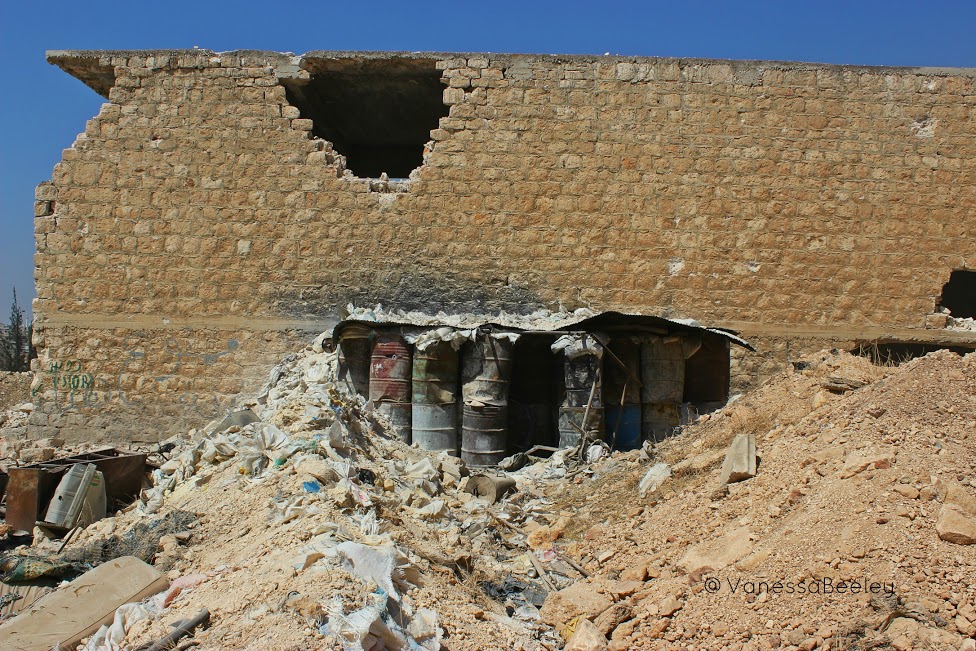
A barrel air-raid shelter or sniper nest created by terrorists in Bani Zaid. (Photo by Vanessa Beeley)
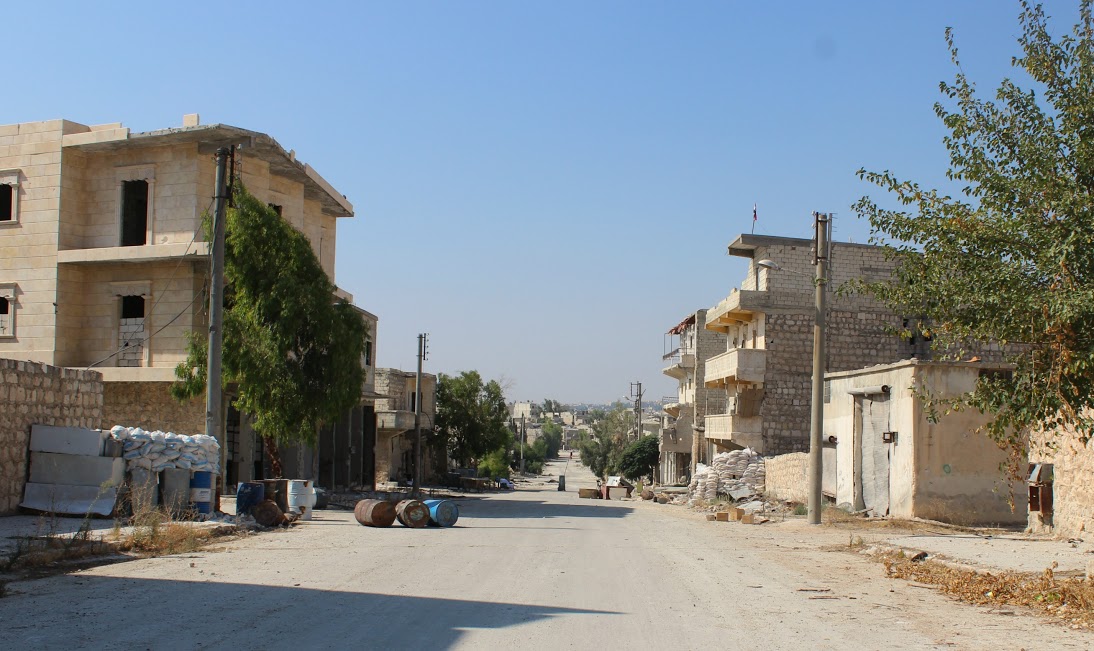
Arriving in Bani Zaid, walking down one of the main streets. (Photo by Vanessa Beeley)
We met with a few SAA soldiers and civilian volunteers in Bani Zaid who opted to camp inside the liberated town to stand guard over the deserted streets and houses.
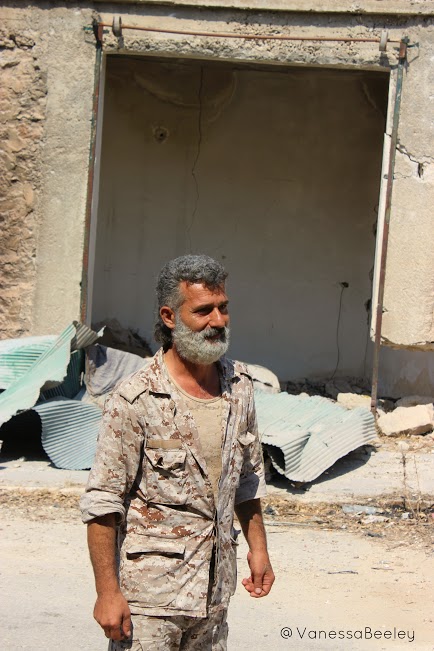
Ihab has three sons–all of whom are fighting in the Syrian Arab Army. (Photo by Vanessa Beeley)
Ihab, a member of the Syrian volunteer forces known as the National Defense Forces, has three sons–all of whom are fighting in the SAA. One of his brothers had already been killed while fighting against the NATO proxy invasion of Syria.
One of his three sons was fighting from inside the SAA military academy close to al-Ramouseh, and another was on the outside also battling terrorist insurgents.
Al-Ramouseh is one of the most hotly contested parts of Aleppo. Liberation of this area by the SAA will mean the opening of another road to Damascus from the south of Aleppo that has been under the control of various “moderate rebel” factions for some time.
Ahmed, another civilian volunteer, has chosen to live in a bombed-out home where he can protect Bani Zaid from terrorist incursions. He has been living in these conditions since the liberation because, he said, “it is my duty to protect my country.”
He made his surroundings as comfortable as possible and sold cigarettes to soldiers as a meager income generator.
During this short tour of Bani Zaid we also saw the remains of the house that had been used as the headquarters of the U.S.-backed and -equipped 16th Division of the Free Syrian Army. The brigade was headed by Yousef and Khaled Hayani, two brothers. Khaled was killed in the air raids; Yousef survived.
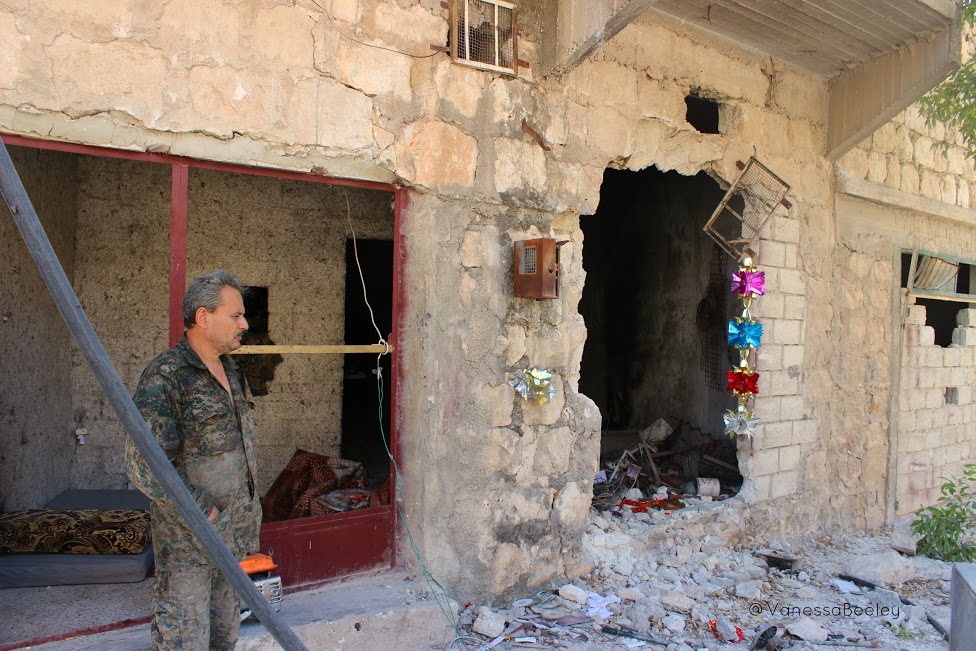
Ahmed lives in a bombed-out home in order to protect Bani Zaid from terrorist incursions. (Photo by Vanessa Beeley)
The 16th Division has been responsible for many of the missile attacks on residential areas inside the Syrian government-held western Aleppo and the Kurdish-held Sheikh Maqsoud.
These massacres and vicious attacks are regularly ignored by the NATO-aligned media, including their network of Western-funded NGOs which hold sway over public opinion with fabricated reports and unsubstantiated accounts always in lockstep with NATO member state objectives in Syria, including “regime change.”
Remains of the headquarters of the 16th Division of the Free Syrian Army. We were told to be careful walking around inside because of the risk of uncleared IEDs that are left behind when terrorists flee an area they have occupied for any length of time. (Photo by Vanessa Beeley)
Part II of Vanessa Beeley’s account of her journey to Aleppo highlights some of the Syrians and Syrian groups who are truly working with civilians and their country at heart.
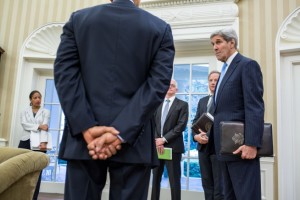
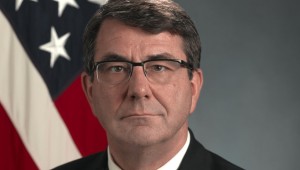

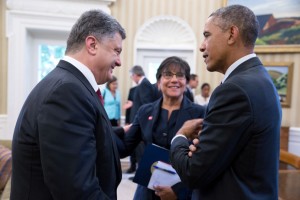



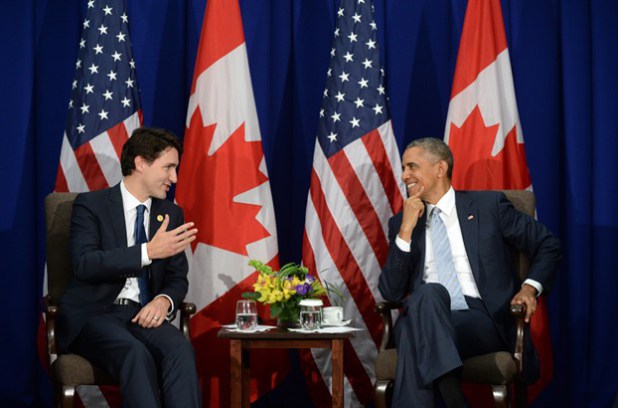



























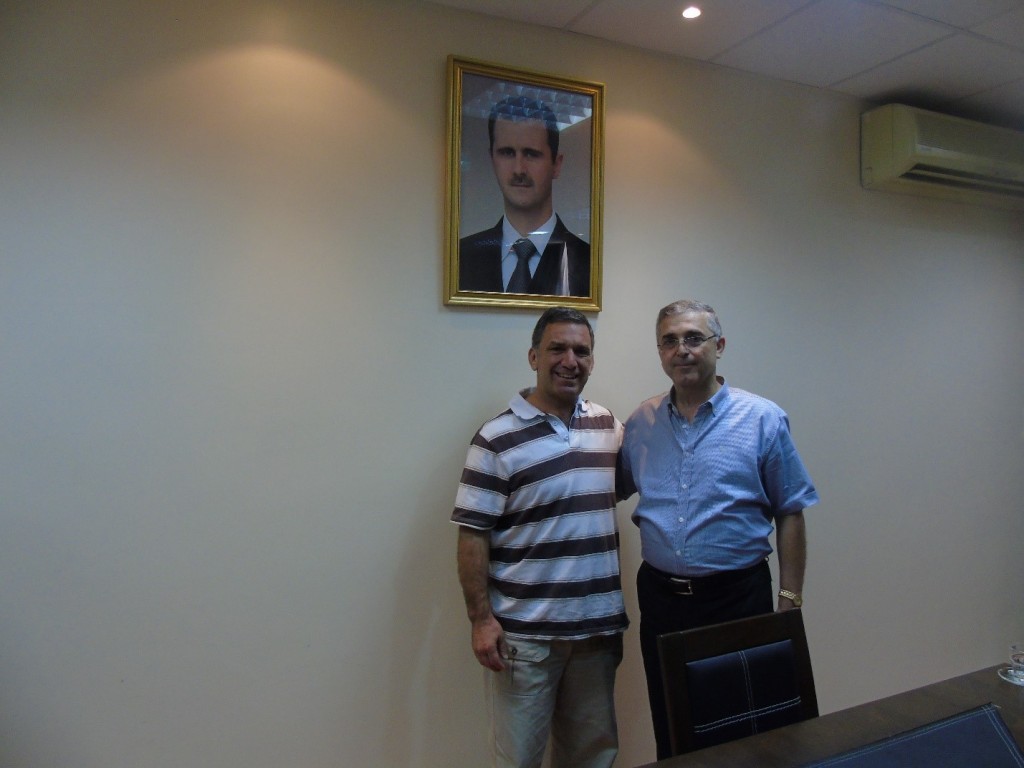




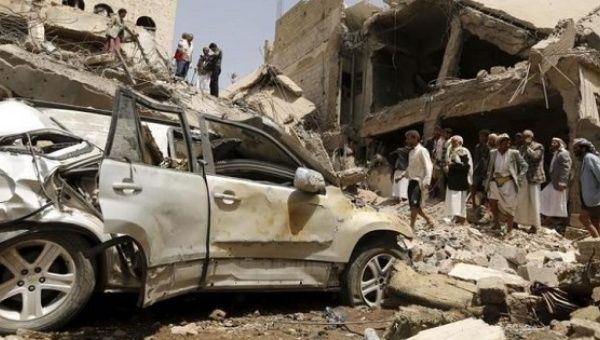
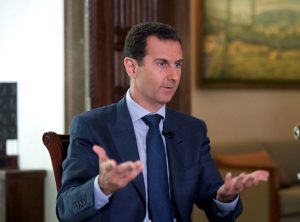

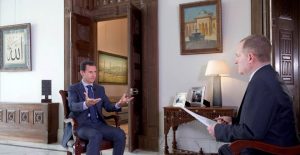
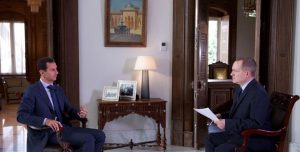



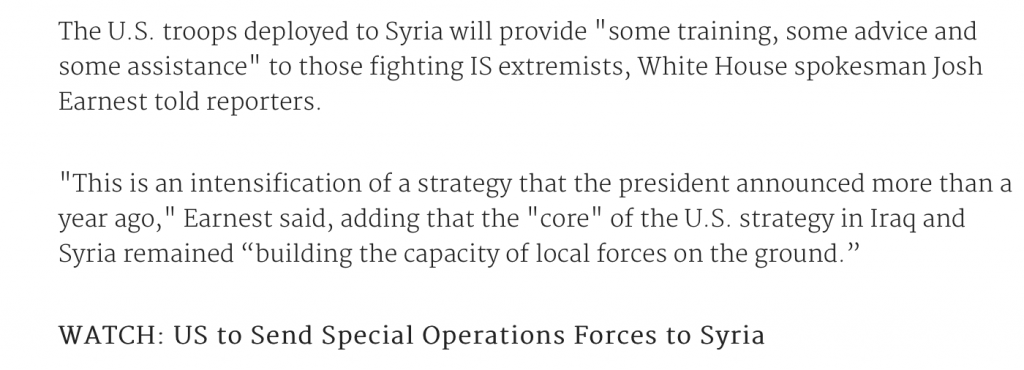
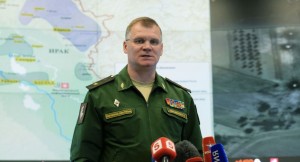
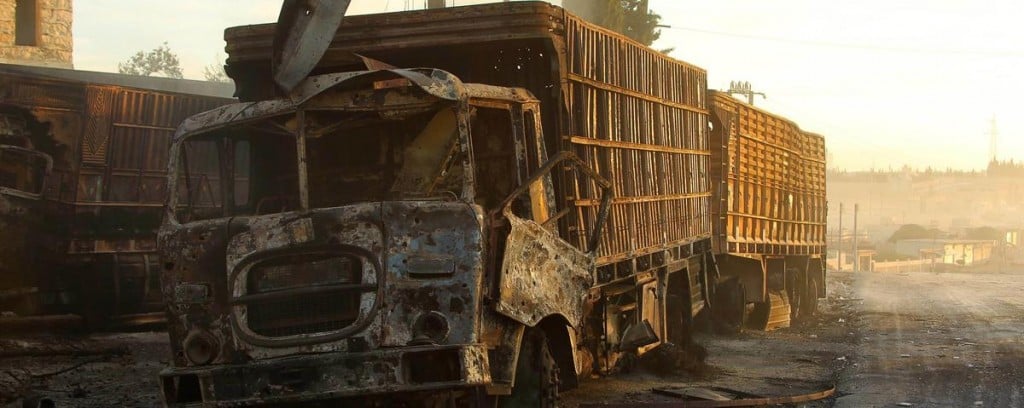
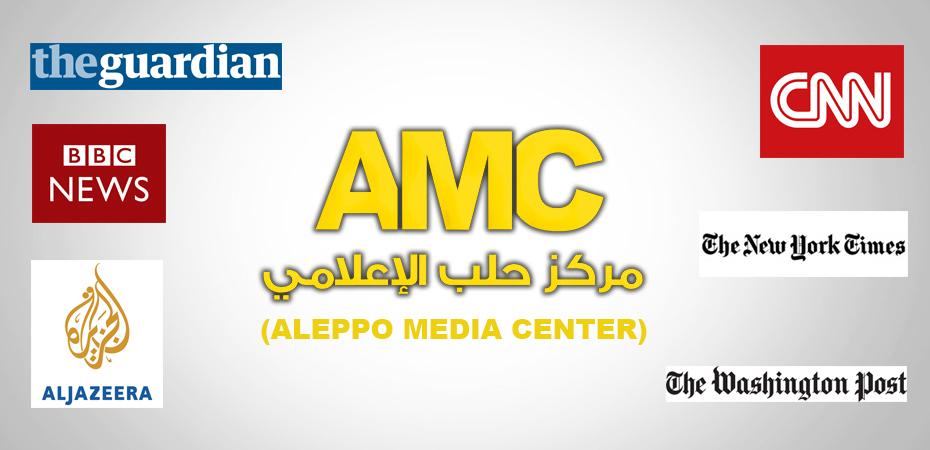
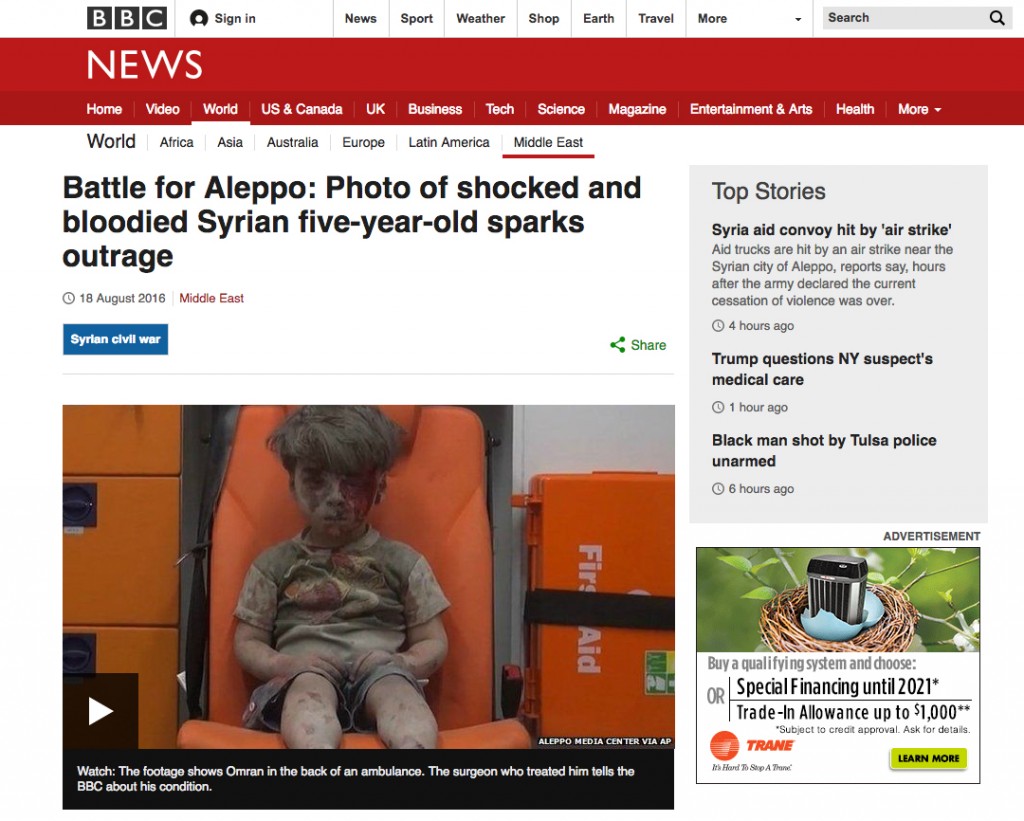
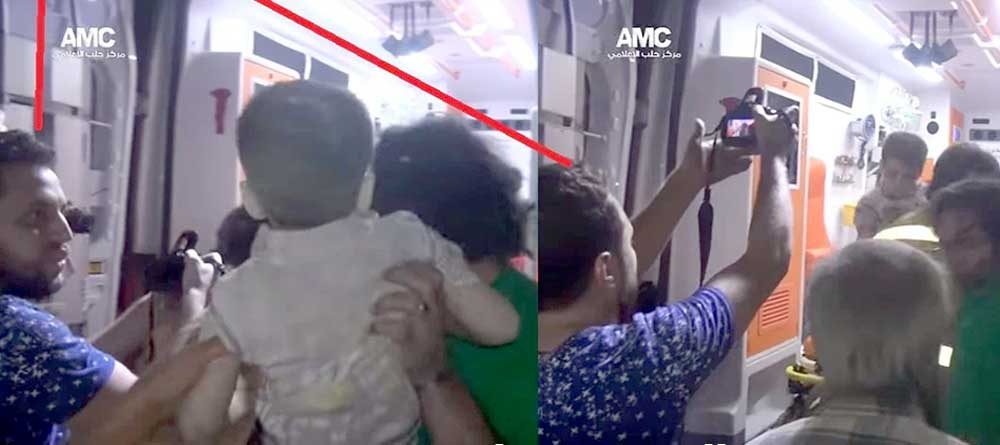
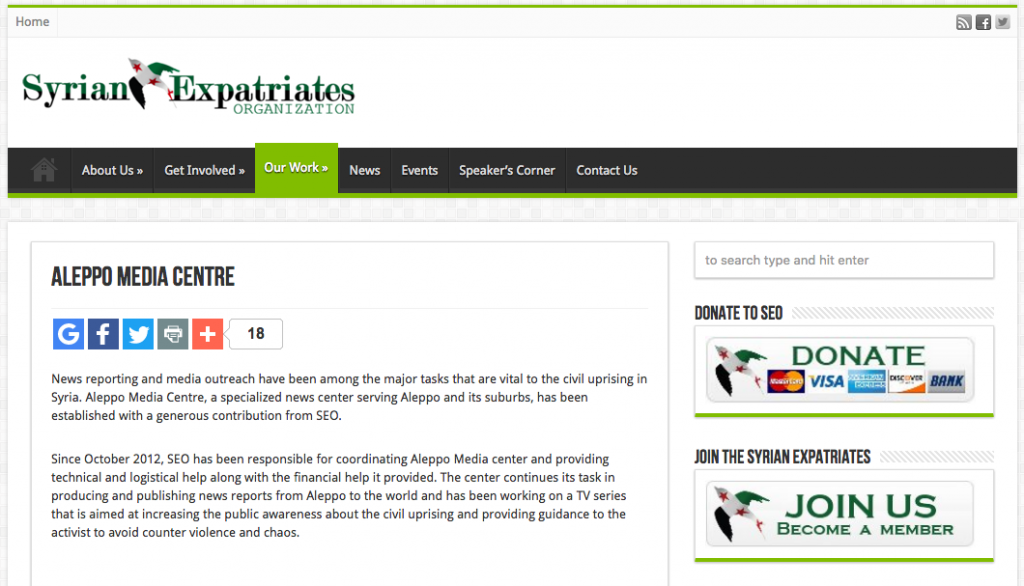
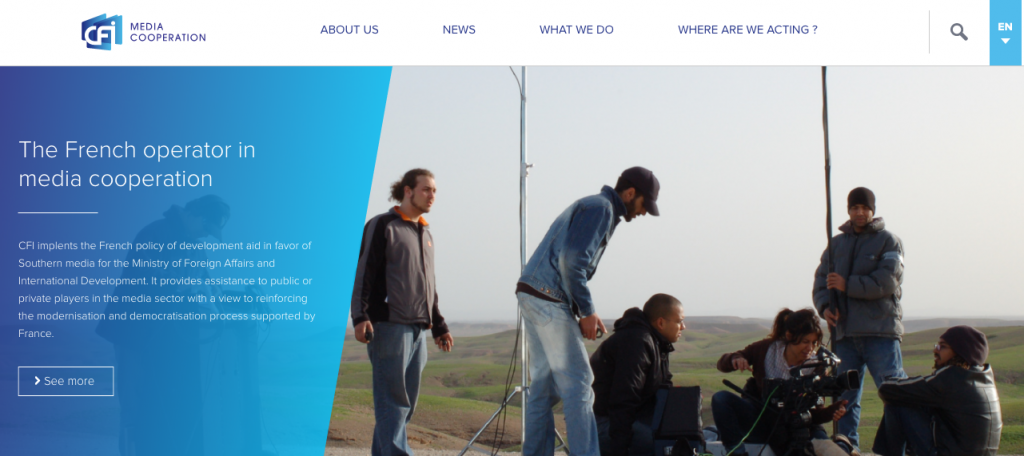
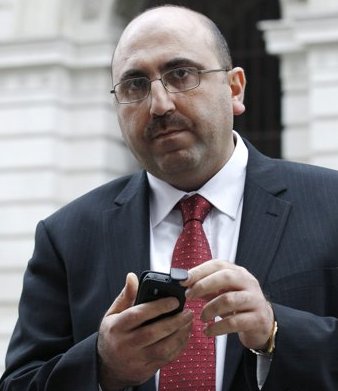 Note here that the EU is also one of the
Note here that the EU is also one of the 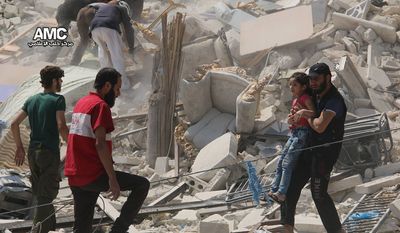
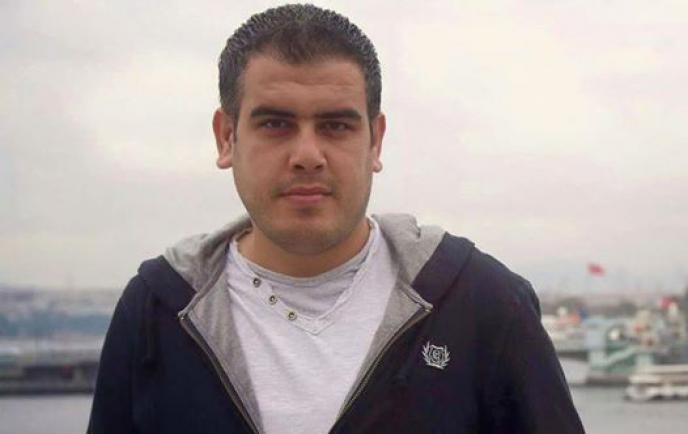

 Not only do both men profess their affiliation with an organisation that is responsible for a huge percentage of the atrocities carried out against the majority of the Syrian people and beyond, but one of their regular speaking companions and co-advocates is none other than Hala Kodmani, the sister of ‘Syrian National Council’ opposition leader Basma Kodmani (photo, left).
Not only do both men profess their affiliation with an organisation that is responsible for a huge percentage of the atrocities carried out against the majority of the Syrian people and beyond, but one of their regular speaking companions and co-advocates is none other than Hala Kodmani, the sister of ‘Syrian National Council’ opposition leader Basma Kodmani (photo, left).
